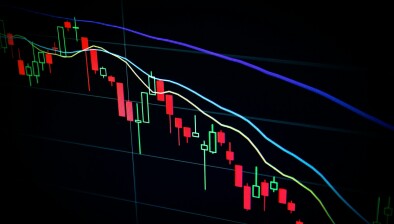Aberdeen: Six macro themes that will reshape investing in 2026

Aberdeen, the specialist asset manager, has outlined six macro themes it believes will reshape investing in 2026 and beyond.
The six themes are geopolitical risk, economic fragmentation, diversification, challenges to central bank independence, rising debt servicing costs, and US equity market concentration.
Against a backdrop of trade wars, political instability and inflation, there’s a fundamental transformation in how markets operate and interact providing both heightened risks and new opportunities.
Paul Diggle, chief economist at Aberdeen, commented: “Investing is being reshaped by forces that demand a more adaptive and globally attuned approach. Geopolitical risk, economic fragmentation, shifting market dynamics and changing equity leadership require investors to rethink legacy strategies and think about new sources of diversification.
“For asset managers, success in this environment will depend on the ability to anticipate policy shifts, identify resilient sectors and regions, and construct portfolios that are both flexible and forward-looking. As the new global order continues to evolve, those who remain agile and open to structural change will be best positioned to navigate uncertainty and capture long-term growth.”
Some of these themes have informed Aberdeen Investments’ product launches in 2025: the abrdn Future Supply Chains UCITS ETF and abrdn Future Raw Materials UCITS ETF active ETFs are designed to exploit the re-shaping of global supply chains and the transformation in demand for raw materials.
Geopolitical risk
Geopolitical risk is now a permanent fixture in the investment landscape. The world has moved from a period of relative stability to one marked by persistent uncertainty.
Power is increasingly distributed among multiple global actors. Economic interdependence, once a source of security, can now be weaponised through tariffs, technology restrictions and control of critical minerals.
For investors, this means geopolitical shocks are likely to be more frequent and disruptive. Building portfolios that can withstand these shocks, through regional diversification, resilient sectors and robust scenario analysis, has never been more important.
Economic fragmentation
Globalisation is giving way to economic fragmentation. Trade barriers are rising, with the average US tariff rate climbing from 3% at the start of this year to 16% now. The relationship between the US and China now serves as a central axis for global economic alignment, influencing manufacturing decisions and capital flows.
Yet fragmentation does not mean everyone loses. Certain countries, such as Mexico and those in Eastern Europe, are well positioned to benefit from shifting trade patterns and new manufacturing hubs.
Sectors that are tied to supply chain resilience, critical minerals and ‘future-proofed’ real estate may also offer fresh opportunities. Investors who look beyond the headlines and identify regions and themes poised for growth will be best equipped to thrive.
Diversification
The classic 60% equity and 40% bonds portfolio is losing its effectiveness.
Supply shocks, rather than demand shocks, now dominate the economic landscape. Disruptions from geopolitics, climate change and pandemics tend to push economic growth down and inflation up simultaneously. As a result, equities and bonds, which once moved in opposite directions, now often rise and fall together.
Traditional methods of portfolio diversification offer less protection. That’s why many investors are seeking additional diversification via private markets, commodities, and assets less exposed to macroeconomic swings.
Central bank independence
Central bank independence is facing unprecedented challenges. Political pressure on institutions such as the US Federal Reserve is mounting, with new appointments and legal challenges threatening to reshape leadership and policy direction.
Globally, central banks are increasingly drawn into political debates and tasked with objectives beyond price stability. The risk is that monetary policy becomes less predictable, investors lose confidence in the ability of policymakers to control inflation and market volatility increases.
Investors must pay close attention to these policy shifts and prepare for a wider range of outcomes in interest rates and asset prices.
Bond market signals
Global debt levels have reached historic highs, with debt-to-GDP ratios exceeding 100% in many major economies. In the US, the deficit is running at levels rarely seen during periods of full employment.
Rising debt servicing costs are putting upward pressure on long-term bond yields, while political instability in countries such as France, the UK and Japan adds to the uncertainty.
This has far-reaching implications for portfolio construction and the risk-free rate. Vigilance and flexibility are essential as markets adjust to these new realities.
US equity market concentration
Recent years have seen a handful of big US technology stocks dominate global equity returns, resulting in elevated market concentration and stretched valuations.
While this trend has delivered strong performance, it has also introduced vulnerabilities. More compelling opportunities may be found in China, broader Asia and parts of Europe, where valuations are more attractive and structural tailwinds are emerging.
The broadening of geographic sources of return is already underway, and a rotation away from US equities towards regions offering greater value could become a defining theme.
Blair Couper, co-manager of the abrdn Future Supply Chains UCITS ETF, said: “The confluence of rising geopolitical tensions, trade fragmentation and green investment is creating a new set of winners and losers. The terms ‘nearshoring’ and ‘reshoring’ aren’t just buzzwords; they’re boardroom priorities now. And so we see opportunity across three key pillars – technology independence, resilient supply chains, and decarbonisation and energy security.
David Clancy, research director for quantitative investment solutions at Aberdeen, added: “The fundamentals are pointing towards the start of a new supercycle in raw materials. Technological advancements in batteries, EVs and semiconductors, combined with global policy support, increasing grid demand and rising renewable energy usage, are strong tailwinds underpinning long-term structural demand for certain raw materials.”






